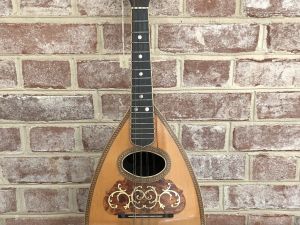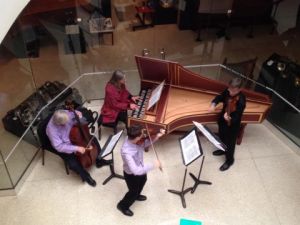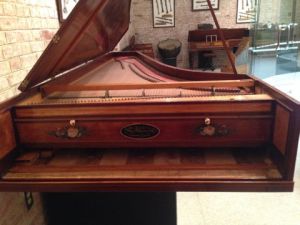Recent Exhibits: Tabla
This past year, we had two small exhibits of musical instruments from DUMIC's collection. One featured free reed aerophones, an accordion and concertina, and the other, our Tabla. If you did not get the opportunity to see them while they were on diplsay, you can visit them below. Enjoy!
Tabla are pairs of asymmetrical, tunable, hand-played drums that have been popular in South Asia and India since the eighteenth century.
Pairs of tabla consist of the treble tabla, or daya drum, played by the right hand, and the bass baya drum played by the left hand. The daya body is a slightly tapered cylinder made out of wood. The body of the baya can be copper, as seen here, or clay. It is shorter and rounder than the daya.
The heads of tabla are attached over and around the bodies using leather cords. The daya is tuned using the spool-shaped wood pieces held by the cords.
Each drum’s head is made of two skins and a central black spot made from layers of iron oxide ash, glue, soot, and copper sulfate. The outermost, upper skin on the daya sits over the rim of the drum and is tuned to the player’s tonic. The lower skin produces second harmonics. The heads on the baya are similarly constructed, but produce darker, less defined pitches. The black spot is not pitched. Tabla are played using fingertips, the wrist, and the palm.
Tabla are still common in Indian popular, religious, and dance music.
You can listen to examples of tabla music on the Museum of Fine Arts, Boston, website: www.mfa.org/collections/object/pair-of-drums-tabla-and-baya-51337




